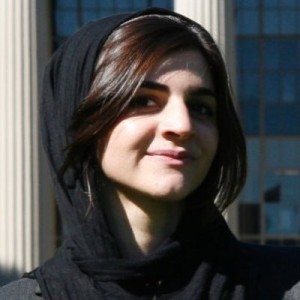|
Keynote Speaker: Ginger Kerrick
Abstract: Get to know Ginger Kerrick, who earned bachelor’s and master’s degrees in physics from Texas Tech University and is the first female Hispanic flight director at NASA. She pursued her dream of working at NASA since she was 5 years old. The audience will have an opportunity to learn her story in her own words. Questions will be answered from across all the 2016 CUWiP sites. Biography: Ginger Kerrick, as a child, dreamed of growing up to be either a basketball player or an astronaut. When neither dream came to fruition, Ms. Kerrick developed a fresh perspective – best summed up by the phrase “It just wasn’t meant to be” – and is today part of NASA, serving in the Mission Control Center at the NASA Johnson Space Center as a Flight Director who has, to date, supported 13 International Space Station and five joint shuttle missions. It was there that Ms. Kerrick, a few years earlier, became the first non-astronaut Capsule Communicator (CapCom), the Flight Control position that relays information from Mission Control to an astronaut crew. Through her service in Mission Control, Ms. Kerrick shares in the experience of space travel; and while she may not be an astronaut, because of her support “each astronaut [is] taking a little piece of [her] with them.” But, it was only through hard work and perseverance that Ms. Kerrick arrived at this place, because to earn both a bachelor’s and a master’s degree in physics she first had to win academic scholarships. For Ms. Kerrick, life is an adventure and a fulfillment of her childhood dreams best summed up in her own words: “I have no idea what is next for me, but I trust I will find myself exactly where I am supposed to be!” Website: http://women.nasa.gov/ginger-kerrick/ Talk on Saturday 11:00 am |
| Prof. Alison Coil Associate Professor and Ingrid and Joseph W. Hibben Chair, UC San Diego 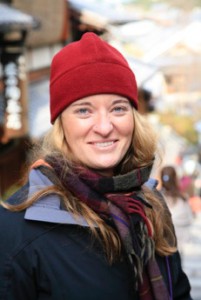
Title: My Life in Astro/Physics Abstract: I will talk about my career path and experiences being a woman in the fields of astronomy and physics. I will share some highlights of my career and challenges I’ve faced and how I got to where I am today. I will also briefly discuss my current research on galaxy and black hole evolution. Biography: Professor Coil received her B.A. in astrophysics from Princeton University in 1997, her M.S. in astrophysics from the University of California at Berkeley in 2001, and her Ph.D. in astrophysics from the University of California at Berkeley in 2004. She was a Hubble Postdoctoral Fellow at the University of Arizona before joining the faculty at the University of California at San Diego in 2008. Her current research interests focus on how galaxies form and evolve with time and how their properties are related to the large-scale structure in which they are embedded. Professor Coil works primarily with observational data, using multi-wavelength imaging and spectroscopy to measure the spatial clustering of galaxies and AGN, as well as detecting large-scale outflowing galactic winds. Most of the data she uses are taken at two of the largest optical telescopes in the world: the Keck telescope in Hawaii and the Magellan telescope in Chile. Website: http://cass.ucsd.edu/~acoil/home.html Talk on Friday 6:00 pm |
| Prof. Ronke Olabisi Assistant Professor at Rutgers University
Abstract: Prof. Olabisi will discuss her research on tissue engineering and regenerative medicine, used to repair or build de novo tissues for treating defects due to injury, disease, aging, or spaceflight. Prof. Olabisi’s approach is through the development of biosynthetic materials, which combine the best aspects of synthetic and biological materials to attain reproducible biomaterials that can drive or direct cell function. Current projects in Prof. Olabisi’s lab focus on tissue engineering a major component of the retina, using seashells (nacre) to direct bone formation, and using cells as tiny factories to deliver a therapeutic agent of choice to a wound or tissue. Biography: Prof. Ronke Olabisi is a team member of the One Hundred Year Starship (100YSS™) initiative and a faculty member in the Biomedical Engineering Department at Rutgers University. Dr. Olabisi conducts tissue engineering and regenerative medicine research, particularly in the area of orthopedic and dermal tissues. Her research while at Rice University is currently being considered for a patent. She has presented her work in peer-reviewed journal articles, book chapters and conferences in 3 countries and her published work has been highlighted in Science and The Spine Journal. Dr. Olabisi is a member of the Orthopaedic Research Society, the Society for Biomaterials, the Biomedical Engineering Society, the American Society for Bone and Mineral Research, and the American Society of Biomechanics. Dr. Olabisi received her Bachelor’s degree in Mechanical Engineering from MIT, Masters’ degrees in Mechanical Engineering and Aeronautical Engineering from the University of Michigan, her doctorate degree in Biomedical Engineering from the University of Wisconsin, and postdoctoral training at Rice University and City of Hope hospital. Dr. Olabisi received one of four nationally awarded Postdoctoral Fellowships from the National Space Biomedical Research Institute and as a graduate student was the recipient of the National Science Foundation’s GSK-12 award. Website: http://bme.rutgers.edu/ronke-olabisi
Talk on Saturday 9:00 am
|
| Layla Shaikley Member of MIT Media Lab, Architect and Entrepreneur Title: Misunderstood: How (and why) I hacked my identity on the Internet Abstract: A talk on #mipsterz (Muslim hipsters), why diversity matters, and how Jay Z helped me combat violent stereotypes on the Internet. Biography: Layla Shaikley is an alumna of MIT’s School of Architecture and Planning where she was recognized as a Graduate Woman of Excellence. Layla also served as an MIT Special Interest Group in Urban Settlements Fellow where she researched and analyzed governmental low-income housing settlements in emerging markets. Layla fused her interests in design, architecture, conflict, and tech at the MIT Media Lab, where she develops solutions to stabilize developing environments. Layla served as an architectural consultant for the United Nations Human Settlements Iraq Programme. In Iraq, Layla’s work was stifled by insecurities. Consequently, she founded crowdSOS, a big data company for emerging markets. Recently, Layla went viral for sparking a conversation across America on the representation of Muslim women in America under the banner of #mipsterz (Muslim hipsters). Previous to MIT, Layla spent time at NASA and co-founded TEDxBaghdad. Website: http://www.laylashaikley.com/ Talk on Saturday 9:45 am |
| Prof. Rae Anderson Associate Professor at the University of San Diego 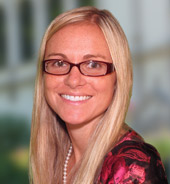
Title: Untangling the Dynamics of Entangled DNA Abstract: DNA, essential for all life, is often forced to function in highly entangled states and crowded environments within the cell. Beyond its obvious biological significance, DNA is also a model polymer that can unlock the molecular dynamics underlying the captivating viscoelastic properties of polymeric materials essential to our daily lives. These highly concentrated systems remain very poorly understood due to their intrinsic complexity and wide ranging effects observed with varying molecular sizes, topologies, and levels of entanglement. We use single-molecule microscopy techniques to elucidate the molecular-level dynamics and interactions of entangled and crowded DNA both in steady-state and in response to microscale strains. Specifically, we use optical tweezers to push and pull microspheres through entangled DNA and measure the force the DNA imparts on the spheres in response to the microscale strains. We also use fluorescence microscopy to track DNA molecules diffusing in these systems to reveal a range of steady-state molecular transport properties and conformational dynamics. I will discuss these general techniques and systems and describe several of our recent experiments highlighting the fascinating effects of molecular length, topology and level of entanglement or crowding on DNA transport, conformation and response to linear and nonlinear strain. Biography: Dr. Rae Robertson-Anderson is Associate Professor and Chair of Physics and Biophysics at University of San Diego. She has been a member of the faculty since 2009. Dr. Anderson received her BS in Physics from Georgetown University in 2003, and her PhD in Physics from UCSD in 2007. Dr. Anderson also completed postdoctoral research training at The Scripps Research Institute. Her PhD and postdoctoral research were funded by an NSF Graduate Research Fellowship and NIH postdoctoral training fellowship, respectively. Since her initial appointment at USD, she has received several prestigious research and education grants including an NSF CAREER Award for her soft matter biophysical research and development of the Biophysics undergraduate program at USD. Website: http://www.sandiego.edu/cas/physics/faculty/biography.php?ID=647 Talk on Saturday 5 pm |
| Dr. Ana Marie Rey Associate Research Professor and NIST Fellow at NIST, JILA and the University of Colorado at Boulder 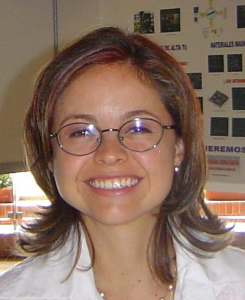
Title: Building with Crystals of Light and Quantum Matter: From clocks to computersTopic of Research: Condensed Matter Physics- Ultracold atoms Abstract: Understanding the behavior of interacting electrons in solids or liquids is at the heart of modern quantum science and necessary for technological advances. However, the complexity of their interactions generally prevents us from coming up with an exact mathematical description of their behavior. Precisely engineered ultracold gases are emerging as a powerful tool for unraveling these challenging physical problems. In this talk, I will present recent developments at JILA on using atoms in crystals of light for the investigation of complex many-body phenomena and magnetism. I will also discuss a new research direction of using atomic clocks not only as precise time keepers but also as unique quantum laboratories for the investigation of new forms of matter with no known counterpart in nature. Biography: Dr. Rey works across the disciplines of atomic, molecule, optical, and condensed-matter physics, using mathematical models to describe the complex behavior of quantum systems. She has pioneered research on developing fundamental understanding and control of novel quantum systems and finding applications in a wide range of scientific fields, including quantum metrology and the emerging interface between AMO, condensed matter, and quantum information science. Her research on ultracold optical-lattice systems is contributing to advances in quantum simulation and quantum information. One of the world’s top young theoretical physicists, Dr. Rey received a MacArthur Fellowship (aka, the “Genius Grant”) in 2013, was awarded the Maria Goeppert Mayer Award in 2014, and was named an APS Fellow in 2015. A native of Columbia, Dr. Rey received her B.S. in Physics in 1999 from the Universidad de los Andes in Bogotá and a her Ph.D. in Physics in 2004 from the University of Maryland. She has been a postdoctoral fellow at NIST and the Institute for Theoretical Atomic, Molecular and Optical Physics at the Harvard-Smithsonian Center for Astrophysics, and is now a JILA Fellow, an Associate Research Professor at the University of Colorado, and a NIST Associate. Website: https://jila.colorado.edu/arey/ Talk on Sunday 9:00 am |
|
Prof. Reina Maruyama
Associate Professor of Physics at Yale University
Abstract: Neutrinos and dark matter play a critical role in the evolution of the Universe and yet are difficult to detect in the lab. Often, we are looking for just a few events over a time scale of years in our detectors. To get away from cosmic rays and other naturally occurring backgrounds that might look like real events, experiments are conducted in deep underground facilities where we can use a mountain or even the Earth itself as a shield. My research has brought me to an underground lab off of a highway tunnel in Italy, in a working salt mine in the UK, a hydro power plant in Korea, and the South Pole. I will briefly describe my research and why neutrinos and dark matter are interesting, what we know and what is still unknown, and describe what it’s like to work in these facilities.
Biography: Prof. Maruyama’s research interests are in exploring new physics in nuclear and particle astrophysics, in particular, in understanding the particle nature of dark matter and neutrinos. Her group is involved in experiments that search for rare processes like direct detection of dark matter in terrestrial-based detectors and neutroless double beta decay. The current experiments include IceCube, CUORE, and DM-Ice. She is the scientific spokes person of the DM-Ice experiment, and is the recipient of the Sloan Research Fellowship, NSF CAREER Award, and UC Berkeley’s Chancellor’s Postdoctoral Fellowship. She is currently and assistant professor at Yale University.
Website: http://maruyama-lab.yale.edu
Talk on Sunday 11:00 am
|
| Dr. Mandy Bratton Lecturer in the Jacobs School of Engineering at UCSD  Title: Lift As You Climb [slides] Title: Lift As You Climb [slides]Biography: Dr. Mandy Bratton is the Executive Director of Global TIES – Teams in Engineering Service – and a Lecturer in the Jacobs School of Engineering at the University of California, San Diego. She earned a Ph.D. in Counseling Psychology from the University of Texas at Austin in 1996. Prior to joining the Jacobs School, Dr. Bratton served as a senior faculty member in Psychology and Human Development and Interim Associate Dean at Prescott College for the Liberal Arts, the Environment, and Social Justice. Since 1986, Dr. Bratton has enjoyed an affiliation with the Semester at Sea Global Studies program that has included three academic voyages around the world, visiting more than twenty countries. She is a founding member and affiliate of UC San Diego’s Center for Research on Gender in the Professions and Center for Global Justice. Her scholarly interests include international education and development, the impact of global and community engagement on students and the organizations and communities with which they work, and gender and diversity issues in academic and professional settings. Dr. Bratton is the Principal Investigator on SISTERS: Sustaining Interest in Science, Technology, Engineering, and Research in Society, a three-year, NSF-funded intervention project that aims to ignite and sustain the STEM-related interests of 5th and 6th grade girls from under-served communities. Website: http://globaltiesucsd.weebly.com Talk on Sunday 1:30 pm |
 Title: A Conversation with Ginger Kerrick
Title: A Conversation with Ginger Kerrick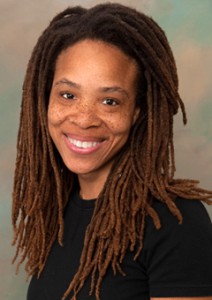 Title: Tissue Engineering Bone, Skin, and Eyes
Title: Tissue Engineering Bone, Skin, and Eyes